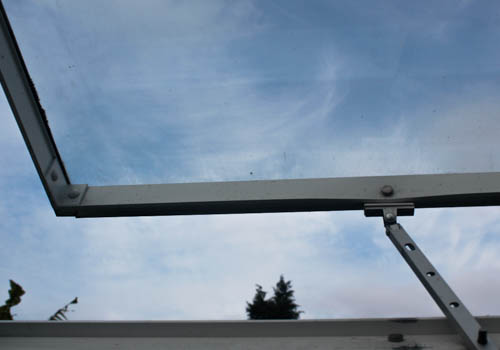
Now’s the time to sow sweet peas in a cool greenhouse for an early display next year. Soften the seed coat by putting the seeds between two layers of kitchen towel on an old dinner plate. Dampen the towel, drain off excess water, then sow those that swell or sprout, after about 48 hours. Leave others a little longer; those that don’t swell and germinate can be composted. Sow living seeds individually into ‘Root Trainers’ or 9cm (3in) pots of seed compost or five to seven seeds to a 13cm (5in) pot, with the seeds spaced 2-3cm (¾-1¼in) apart, then cover them with 1cm (½in) of compost. Water in gently, cover the pots with clear polythene then put them in a propagator at about 15°C (59°F). Remove the covering after they have germinated and overwinter the young plants in a cold frame or unheated greenhouse. If not sown individually, transplant single seedlings into 9cm (3in) pots once they have reached about 3.5 cm (1½in) tall.
Continue to sow batches of winter salads weekly in an unheated greenhouse, when it is warm and sunny in trays, pots, old growing bags or borders for ‘cut and come again crops’ for harvesting through autumn and into winter. Try land cress, pak-choi, mizuna and mibuna greens plus lettuce, lamb’s lettuce, chicory and radish. You can also use what’s left from earlier brassica sowings and harvest them as microgreens.
Bring pelargoniums into the greenhouse before the first frosts. Cut back the main stems to within a few inches of the base and keep them slightly moist over winter (more are killed by overwatering than under watering) maintain a temperature of around 10°C (50°F). Tender Fuchsias and marguerites can be overwintered this way, too.
Ventilate the glasshouse as much as possible, particularly on dry days but keep ventilators closed if it’s damp or foggy and avoid creating excessive draughts. Lack of ventilation and high humidity in the glasshouse encourages botrytis or grey mould, which is grey-brown and fuzzy in appearance and spreads rapidly in damp conditions. Check regularly and remove infected material, or use a glasshouse fan heater to maintain air circulation during colder periods when the windows aren’t opened.
Finish tidying the green house remove old crops, weeds and debris and brush out then wash pots and seed trays in a solution of disinfectant, rinse thoroughly, allow to dry, then stack so they are ready for seed sowing next spring. Go through your collection of pots and trays to check you have sufficient numbers of all sizes and buy more if necessary.
Check websites and catalogues and order your seeds ready for next year. Buy your favourites plus something new, to broaden your taste.
Cuttings of tender plants taken in September and annual seedlings sown earlier in the year, can now be transplanted into pots one or two sizes larger.
If you enjoy working in your greenhouse over the winter, it is worth installing lighting in your greenhouse, LED lighting will increase the length of the sowing season, too.
Happy gardening! Matt


